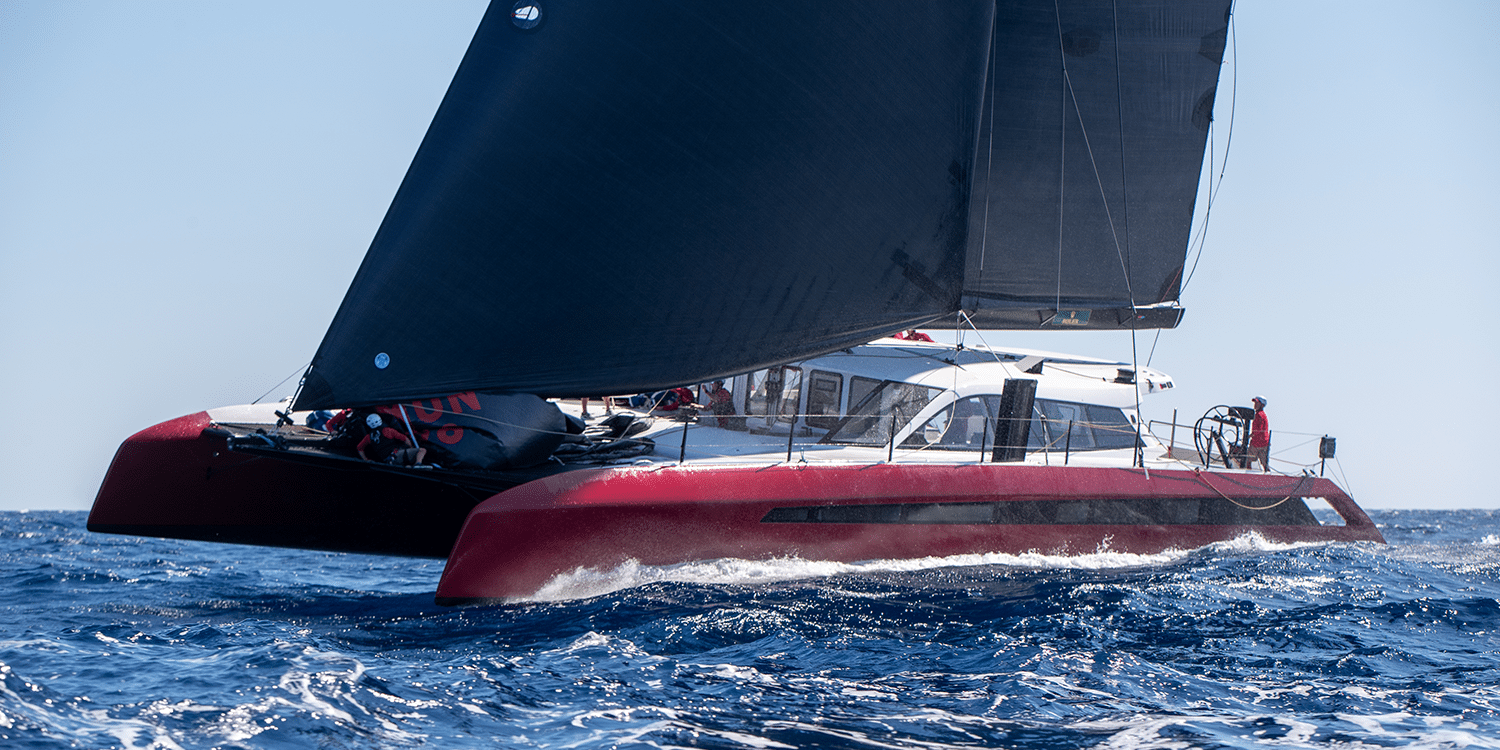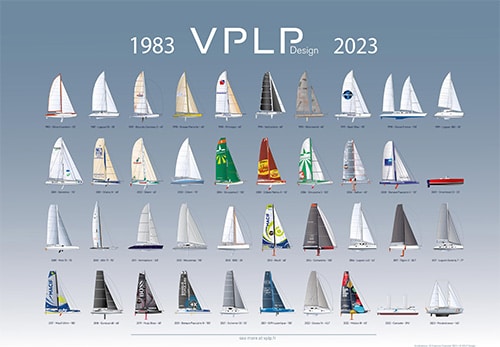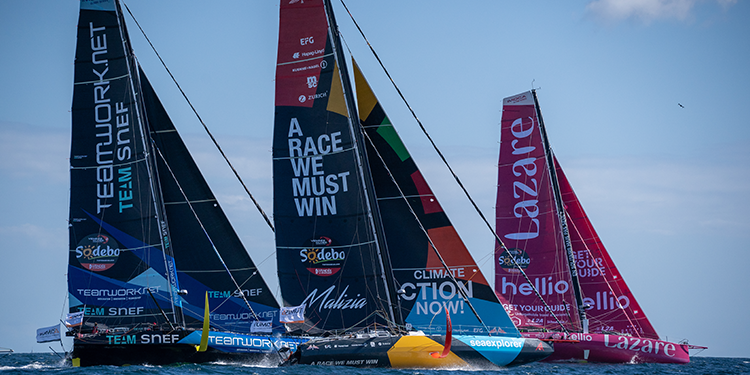Launched in early June for Irvine Laidlaw, a Scottish baron, the first Gunboat 80 made her regatta debut in the Maxi Yacht Rolex Cup (3–9 September, Porto Cervo). Xavier Guilbaud, Partner Naval Architect at VPLP Design, and Benoît Lebizay, Managing Partner at Gunboat, were aboard to present this exceptional catamaran.
She’s the eighth Gunboat to be launched since the brand was picked up in 2016 by Grand Large Yachting, and she’s also the biggest. While seven Gunboats ranging in size from the Gunboat 68 to the Gunboat 72 flybridge have already gone into the water since last spring, the new Gunboat 80 represents another step forward for the range of ocean cruising catamarans built by the yard based in La Grande Motte (France).
“We honoured the brand’s DNA, notably with the inclusion of a cockpit forward and a helm station inside,” says Xavier Guilbaud. “But we also managed to move the mast further aft, stepping it on the coachroof, which results in a more balanced sail plan and a better centre of gravity.” Unlike her predecessors whose carbon cored layup was infused in-house, the 80 was built entirely with pre-impregnated carbon fibre, a construction process also used on the big racing boats (Ultim, IMOCA).
Because of this, Gunboat decided to outsource the manufacture of the hulls, superstructure and bulkheads to Multiplast (Vannes) and Fibre Mechanics (Lymington). It took two years to build the first boat. “On this model we are assemblers, in the best sense of the word. More than ever our expertise lies in our capacity to manage the integration of complex systems in a body whose weight estimate is strictly controlled. Weight estimates are, by the way, a contractual obligation at Gunboat,” says CEO Benoit Lebizay.
This focus on weight began way back in the concept stage, because the boat’s lines and structure were designed for the most unfavourable loading scenario, in this instance 29 tonnes light displacement. The second Gunboat 80, which was commissioned by the American Jason Caroll (owner and skipper of the MOD70 Argo) for fast cruising with his family, should be close to this maximum displacement.
An Especially Light First Build
The design brief was different for the first Gunboat 80 Highland Fling XVIII (named after a Scottish dance) which was launched in June for Scotsman Irvine Laidlaw, Baron of Rothiemay. “He intends to use her exclusively for day racing. Which means that the interior fittings were kept to a strict minimum, and he challenged us to make the maximum weight-savings on every item, including on the glazing and the paintwork!” says Xavier Guilbaud.
Highland Fling XVIII, whose sail plan features no fewer than 6 headsails(!), is considerably lighter and, in the words of her architect, has turned out to be “incredibly responsive and unbeatable in light winds”. Xavier Guilbaud was able to find out for himself during the Maxi Yacht Rolex Cup in early September at Porto Cervo. Her liveliness on the water demands great vigilance from the crew because her twin hulls begin to rise in 12 knots of true wind. This means that sail has to be shortened earlier than it would on the racing cruiser version. Not that it seems to bother her owner who, despite celebrating his 81st birthday in late December, continues to steer the boat when racing, as per the rules of the International Maxi Association (IMA).
“She’s his eighteenth racing boat and the first multihull boat he has had built,” says Benoit Lebizay. “While he was waiting for the launch, he bought a second-hand Gunboat 68 just to get a feel for her!” For the very first time, the 2023 edition of the Maxi Yacht Rolex Cup saw the inclusion of a special multihull class, with times corrected according to the Offshore Racing Congress Rule.
Three multihull boats signed up for Porto Cervo. “Their presence clearly made an impression on many monohull owners,” says Xavier Guilbaud. Highland Fling XVIII was particularly impressive, finishing second. Requiring a crew of twelve (thanks to hydraulic assistance) instead of the twenty or so you normally see on a monohull of similar size – and sailing twice as fast – these catamarans are built to the standards of the very best offshore racers and as such offer an alternative that calls into question the select circle of the Maxi yachts. And they could well establish a trend for the coming years.






